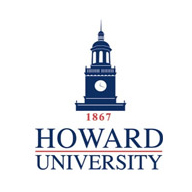Below is a summary of the abstract you submitted. Presenting author(s) is shown in bold.
If any changes need to be made, you can modify the abstract or change the authors.
You can also download a .docx version of this abstract.
If there are any problems, please email Dan at dar78@pitt.edu and he'll take care of them!
This abstract was last modified on April 29, 2019 at 7:05 p.m..

Mycobacteriophages are viruses that infect mycobacterial hosts, including Mycobacterium tuberculosis and Mycobacterium smegmatis. These are studied for purposes which include viral ecology, epidemiology, tools in molecular biology and in the development of therapeutics. The aim of this project was to explore phage diversity through isolation and characterization of unique mycobacteriophages from 125 soil samples collected from the Howard university environment, using Mycobacterium smegmatis as the host. Almost all the phages were derived from the enrichment culture. Subsequently, phages were purified using standard protocols, lysates generated, DNA was isolated, quantitated, characterized and representative samples sequenced by the Pittsburgh Bacteriophage Institute, using Illumina Sequencing. Sequenced genomes are currently being annotated, (except Delton which is already approved with GenBank Accession MK559427), using various in-silico programs. With Dallas and Jonghyun identified as temperate, their lysogens are been used to characterize other phages. Furthermore, all phages are being utilized for identifying patterns of phage sensitivity/insensitivity—immunity testing using wildtype M. smegmatis mc2155 and generate lysogens. Data analysis indicate that sequenced phages can be divided into five clusters: B (phage SynergyX, Abinghost and Bananafish; C (Blackbrain, Cactojaque, Kboogie, Trinitium and YoungMoneymata ) G1 (Jonghyun ), J (Dallas) and a singleton (Onyinye ). GC content ranged from 64.7- 68.9% and was identified for morphotypes Siphoviridae and Myoviridae. In addition, preliminary data from sensitivity/insensitivity testing suggests that several of these phages are lytic. Availability of the genomic information from such diverse clusters will help the study of bacteriophage diversity and their evolutionary mechanisms that give rise to the vast diversity seen in the bacteriophages."
